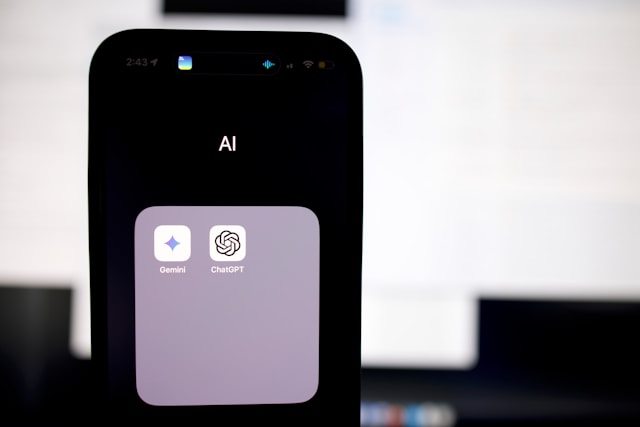Artificial intelligence (AI) is rapidly shaping the way we live, work, and make decisions. From chatbots that answer customer questions to self-driving cars and medical diagnostic systems, AI is everywhere. But while the technology is powerful, it is not flawless. Mistakes happencand when they do, the consequences can range from mild inconvenience to life-threatening outcomes.
So, what happens when AI gets things wrong? To answer that, we need to explore why AI makes mistakes, real-world examples of failures, and what these errors teach us about the limits and responsibilities of artificial intelligence.
Why AI Gets Things Wrong
AI may seem “intelligent,” but it is only as good as the data and algorithms behind it. Errors happen for several reasons:
-
Data bias and poor training sets: If an AI system learns from biased or incomplete data, it will reproduce those flaws in its decisions. For example, hiring algorithms have shown discrimination when trained on biased datasets.
-
Misinterpretation of context: AI lacks true understanding of human nuance. It might misinterpret sarcasm, cultural references, or ambiguous requests.
-
Limitations of algorithms: Even advanced models like GPT or image recognition tools operate on probabilities, not guaranteed truths.
-
Over-reliance on automation: Businesses or individuals sometimes trust AI outputs blindly without double-checking, which can magnify the damage of a small mistake.
These limitations remind us that AI isn’t “thinking” it’s predicting patterns. And those predictions aren’t always right.
Examples of AI Mistakes
Looking at real-world AI failures helps us see the risks more clearly.
Chatbots Giving Incorrect Answers
AI-powered chatbots can provide quick, human-like responses. But when they misunderstand a question or lack updated data, they can spread misinformation. For instance, a customer might receive wrong product details or a misleading medical suggestion.
Self-Driving Car Incidents
One of the most serious consequences of AI errors comes from autonomous vehicles. In some cases, self-driving systems have failed to recognize pedestrians or unusual road conditions, leading to accidents. This shows how high the stakes are when AI mistakes intersect with human safety.
Healthcare Misdiagnosis
AI tools in medicine promise faster diagnosis and personalized treatment. But if trained on biased or incomplete medical data, they may misdiagnose conditions delaying proper treatment or recommending unnecessary interventions.
Financial System Bias
Banks and lenders increasingly use AI to evaluate creditworthiness. Yet algorithms have denied loans unfairly to certain groups due to biased training data. This demonstrates how AI mistakes can reinforce inequality.
Consequences of AI Errors
The consequences of AI mistakes can vary, but they generally fall into three categories:
-
Personal impacts: Wrong information, financial losses, or privacy violations. For example, someone receiving poor health advice from an AI chatbot.
-
Business impacts: Reputational damage, legal liability, and customer mistrust. If a company’s AI gives incorrect results, trust can erode quickly.
-
Societal impacts: Reinforcing discrimination, creating safety hazards, and spreading misinformation at scale. AI bias in hiring or law enforcement can have lasting social consequences.
When AI fails, the ripple effects can be far greater than a single human mistake because the error can spread quickly and affect many people at once.
How Humans Can Respond to AI Errors
The good news is that AI mistakes don’t have to mean disaster if humans remain involved in the loop. Some key practices include:
-
Human oversight: AI should support decisions, not replace them entirely. A doctor verifying AI medical suggestions is an example of safe oversight.
-
Transparency and accountability: Companies must be clear about how AI systems work and take responsibility when things go wrong.
-
Building resilient systems: Designing AI with fail-safes, regular audits, and ethical guidelines can reduce harm from mistakes.
Rather than seeing AI as infallible, it’s better to treat it as a tool that works best with human judgment.
Learning From AI Mistakes
When AI gets things wrong, it also creates opportunities to improve.
-
Feedback loops: Errors provide data that can be used to retrain and strengthen algorithms.
-
Ethical design: Failures highlight the need for fairness, accountability, and transparency in AI development.
-
Balanced progress: Instead of rushing to replace humans, companies can focus on collaboration where AI handles repetitive tasks while humans handle nuance and responsibility.
Mistakes don’t mean AI has failed; they mean AI still needs refinement.
Conclusion
So, what happens when AI gets things wrong? The answer is that mistakes can cause misinformation, accidents, and bias, but they also serve as powerful lessons for building better systems. AI errors remind us that this technology is not perfect it is a tool that requires careful oversight, ethical design, and human responsibility.

